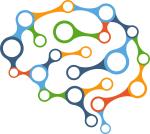
The Cognition & Brain Dynamics lab principally investigates temporal cognition and perception. Our lab is part of the Cognitive Neuroimaging Unit (INSERM) hosted at NeuroSpin (CEA, DRF/Joliot) and affiliated with Université Paris-Saclay. We combine cognitive theory with state-of-the-art human neurosciences (using MEG, EEG, fMRI, psychophysics and any suitable methods to address our questions).
Crédits: Benoit Lordelot, film; ANR; European Union’s Horizon 2020 research and innovation programme grant agreement No. 101017727, FET Experience. Contributors: Camille Grasso, eXperience Postdoctoral Fellow; Matthew Logie, eXperience Postdoctoral Fellow; Yunyun Shen, PhD student.
Temporal Cognition distinguishes two ways in which the nonverbal brain represents time: the interval sense and the phase sense (Gallistel, 1990). Interval timing is the ability of an organism to quantify and compare time intervals (i.e. durations or temporal distances). The phase sense refers to the internal mapping of events in time, supporting the ability to predict when an event will occur in a given period of time (also called temporal orienting or attention).
The phase sense vs. interval timing dichotomy is essential in distinguishing at least two neural operations: (i) the mapping of events in time, which requires a mechanism to code and time-stamp events in a cognitive map (in the manner we consciously map historical events on a calendar) and (ii) the quantification of internal distances and relational operations between two recorded quantities. Both are essential and complementary facets of temporal cognition.
Additional distinctions between implicit and explicit timing can be made, which are essential in the field. Explicit timing refers to the deliberate (conscious and intentional) engagement in timing to solve a task, for instance when estimating a duration. Implicit timing refers to the automatic (unconscious) extraction of temporal regularities in the sensory environment, which can be used to form temporal predictions to facilitate the processing of future inputs.
A long-standing interest in the lab is multisensory processing, which is conceived as a first step towards building abstraction in the mind. For instance, how does the brain infer that the same sensory events originate from the same cause ? Given the same location in space, is the simultaneity of events necessary and sufficient to integrate multisensory events?
